Stone Sculpture – The Soft and Hard of It
Working hard stone is much more difficult than sculpting softer material like marble that moves relatively easily with the experienced use of chisels and hammers. Working hard stone punishes one’s bones. Granite and Basalt, high up at 6 on the Mohs material hardness scale, are prone to shearing and splintering and thus, often require sculptors to use power tools like diamond-tipped chain saws and rotary bits.
GRANITE … CREATING “SPOON”
In 1988, I found an interesting four-ton piece of granite whose facets allowed me to play with the juxtaposition of its rugged angles that were interspersed with its sweet, easy-to-work, flat surfaces.
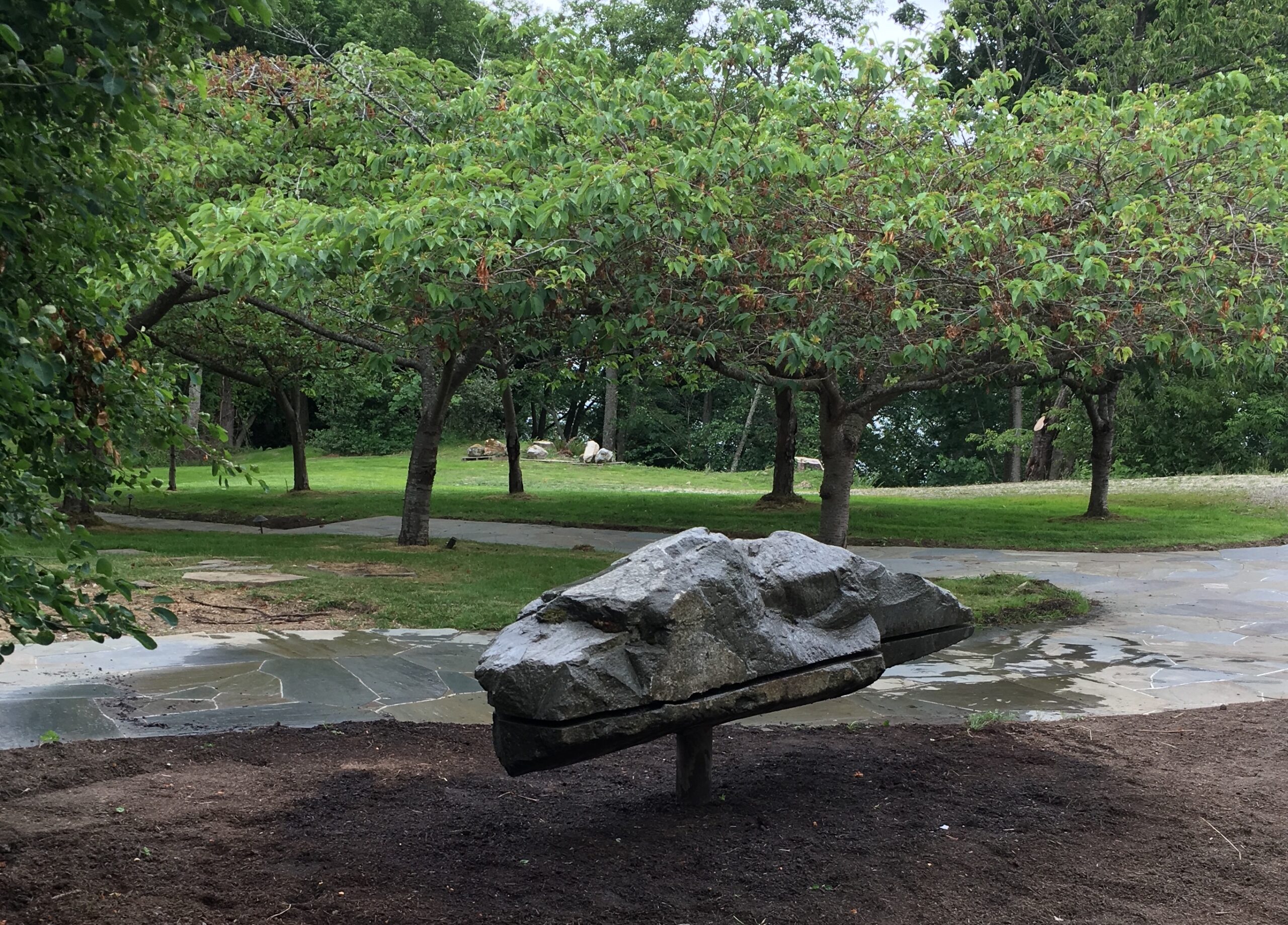
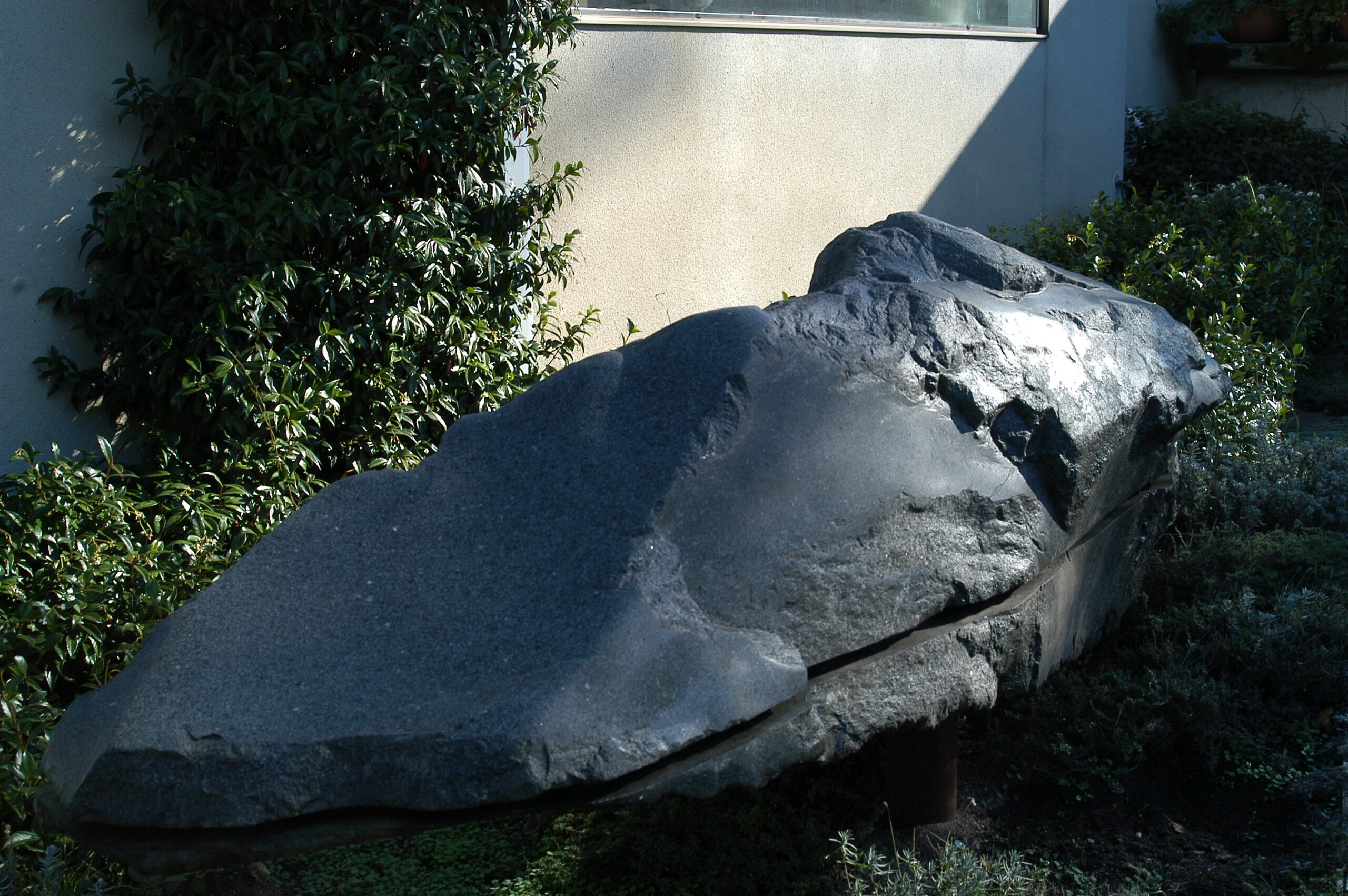
Its concave, front-top face and several other flat areas begged to be polished. After working it for several weeks, I split the stone horizontally using a diamond band-saw, separated the bottom from the top with a 1″ gap, and placed the work on a single column secured in 4 yards of concrete.
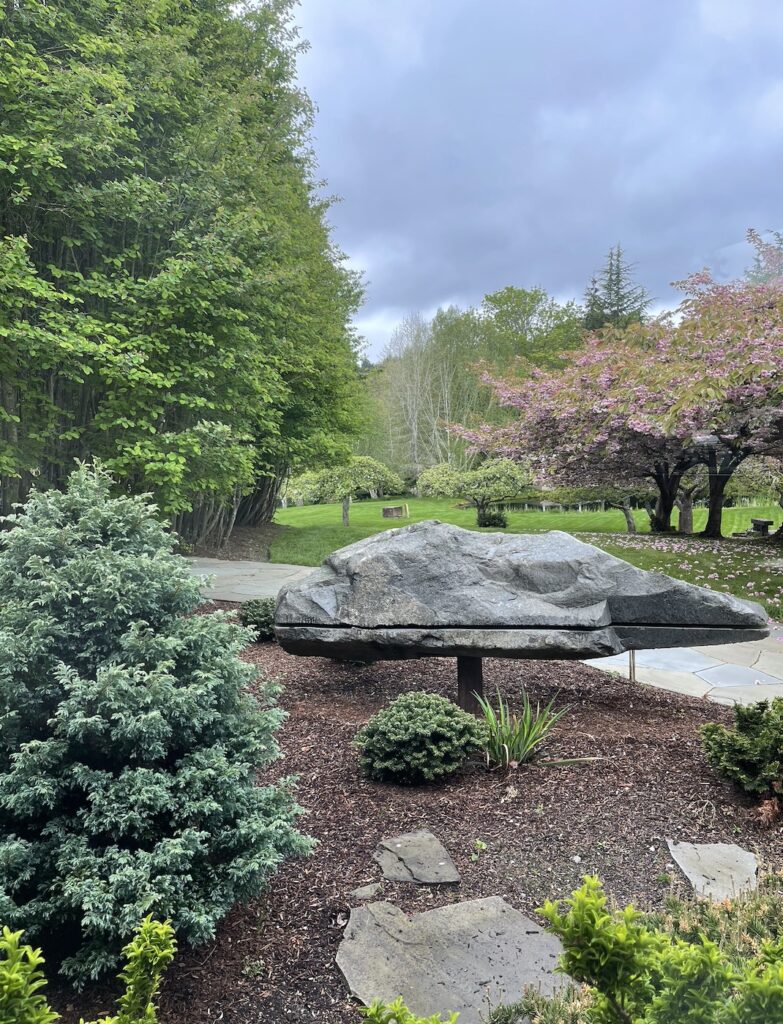
The work evokes many interpretations. We named the final work SPOON, in honor of its most prominent concave surface, and then installed it in Barbara’s conifer garden. It now sports a soft moss that has added even more color accents to it.
BASALT… CREATING “SISTERS“, “PSYCHE” AND “SIRENS“
Stone, whether it is “worked” or not, can be exceptionally stunning. Some types, like onyx, exhibit wondrous colors. Precious and semi-precious gems, of course, “refract” light. Others, like Chlorophane actually transmit light.
Unworked “found” stone can have dramatic presentations depending on the way it is naturally or intentionally situated…think of the sandstone arches in Utah, for example, that were carved over millions of years.
In 1988, I located an array of some especially impressive massive basalt pieces. I selected three, named each one after Greek muses, and placed them side by side as greeting sentinels to the main gate of our family home. Each of 8’x5’x5′ stone has a special character with its sheer mass and multiple facets and faces.
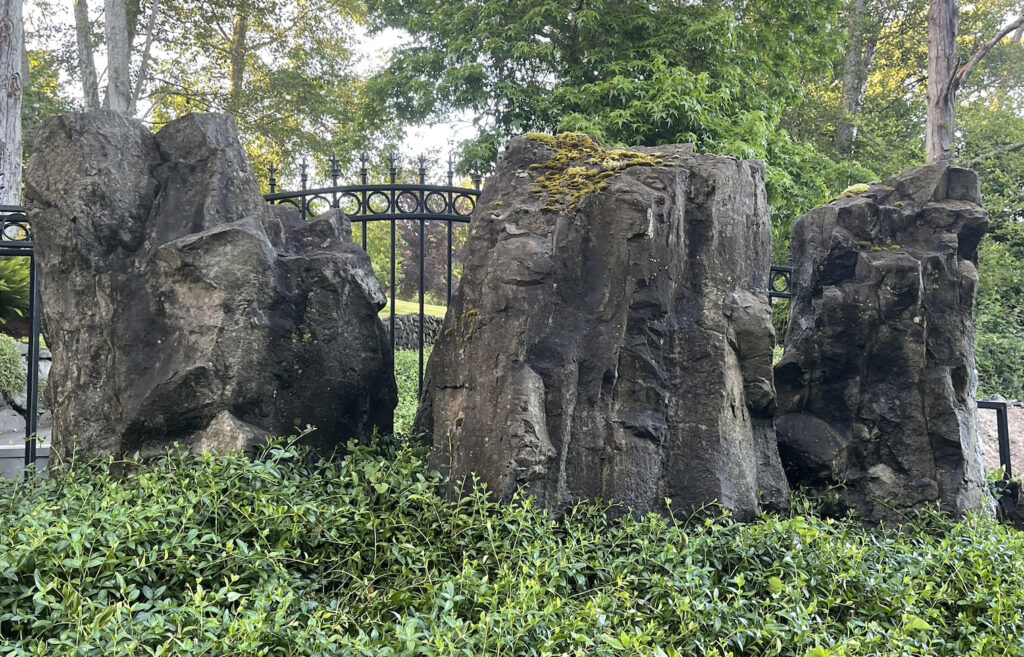
Because they complement each other so well, are so alike and yet so different, I named this found threesome “SISTERS,” the first triad in a series of threesome sculptures installed on Maury Island.
SCULPTING BASALT
In 1992, I decided to actually sculpt basalt, the igneous material with which I became enamored after studying the massive, deep black Egyptian basalt sarcophagi at the NY Met. 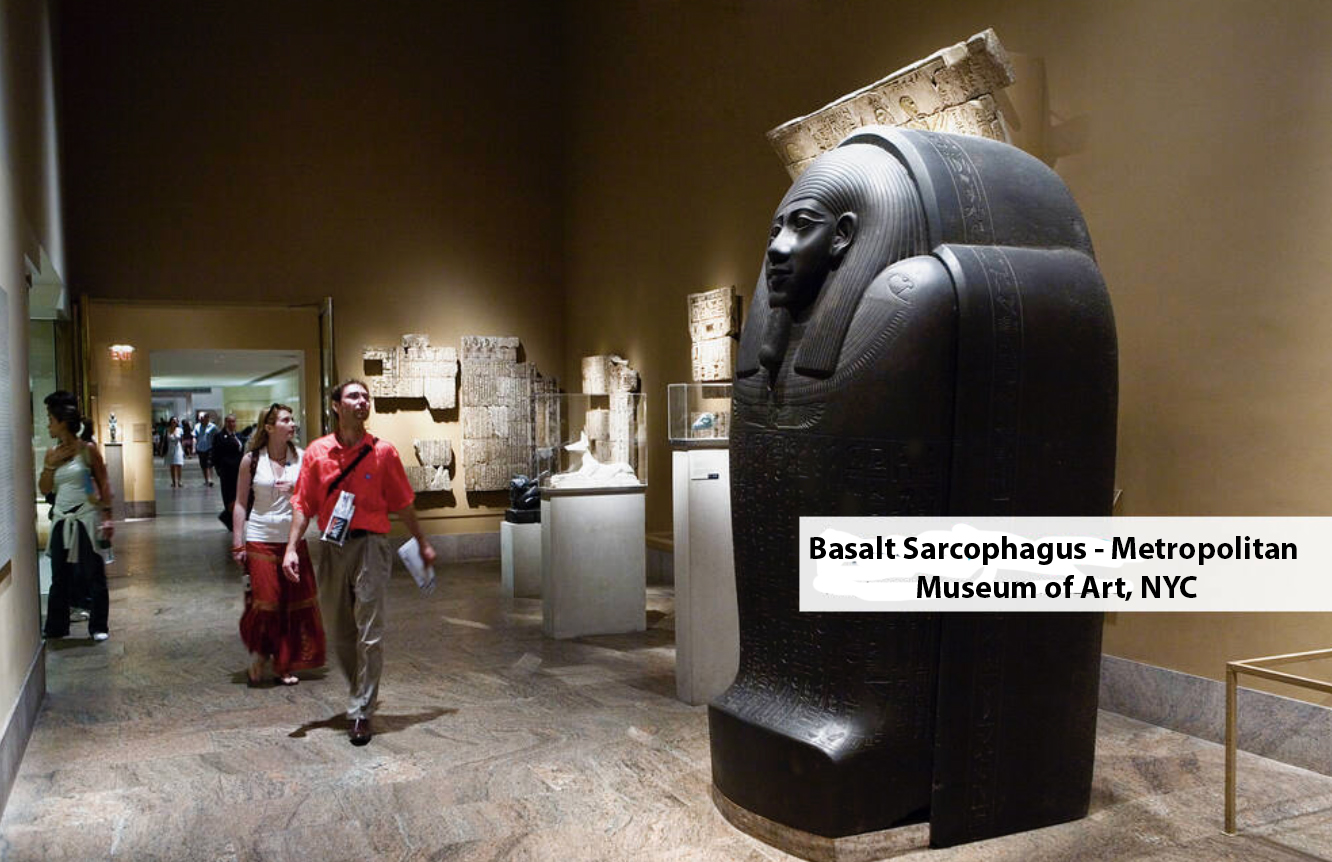
I located an intact Cascade Basalt hexagonal stone without invisible faults, testing the work by the sound of its resonant, musical “ping.” A “spalted” stone, i.e. one with microscopic cracks, will not resonate. Then I began working it into the piece I later named “PSYCHE”, thus titled because of the meditative-painstaking process of sculpting the complex, interwoven contours. Over several months, I exorcised many demons while cutting and then finishing it through multiple, successive wet polishing steps (60 advancing to 10,000) of diamond grit. When Psyche is oiled and shiny, it is gorgeous.
Below are a few pictures of the progression of Psyche from a 6 foot, 6000 lb hexagonal basalt column into its final, polished form:
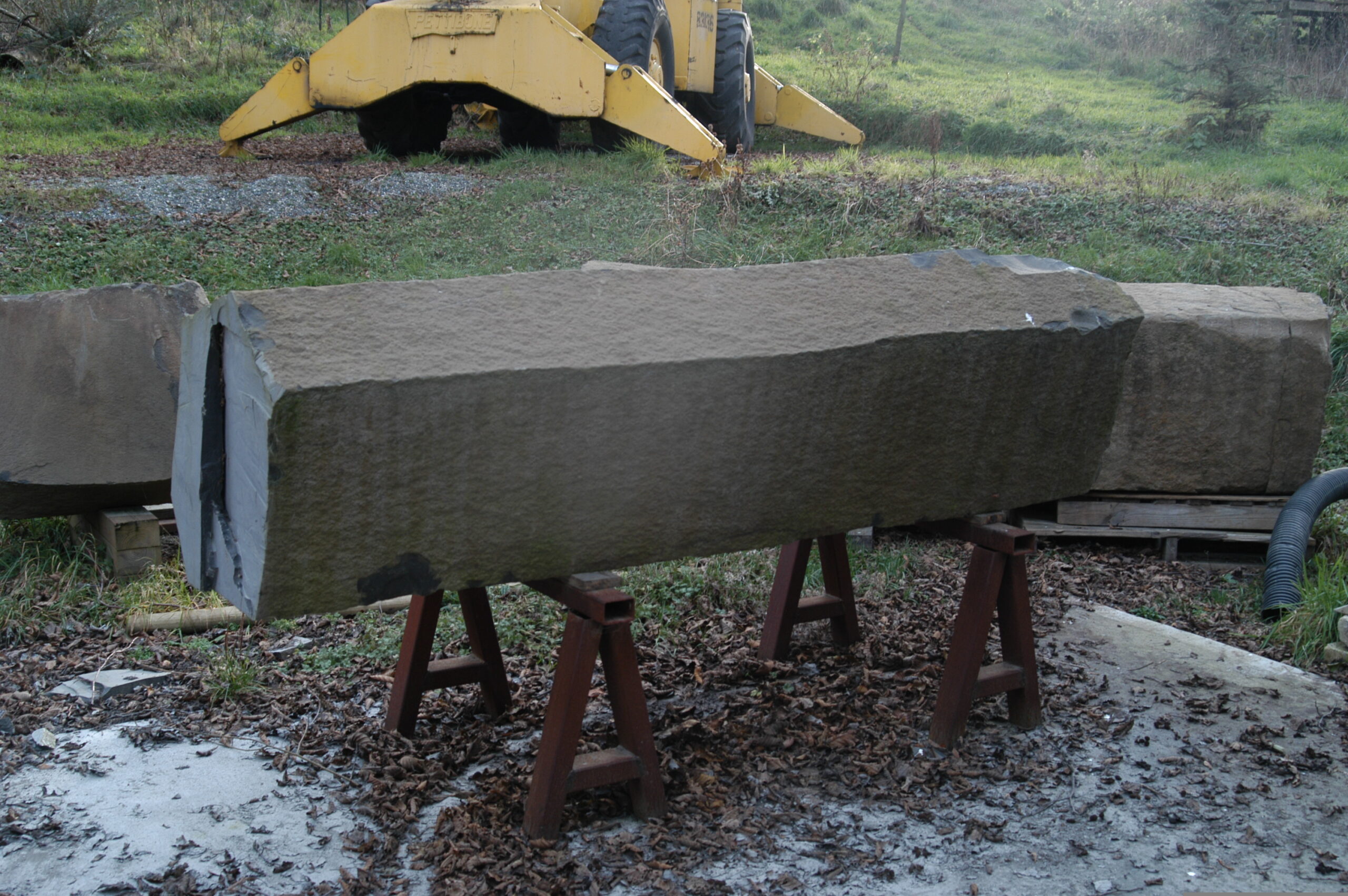
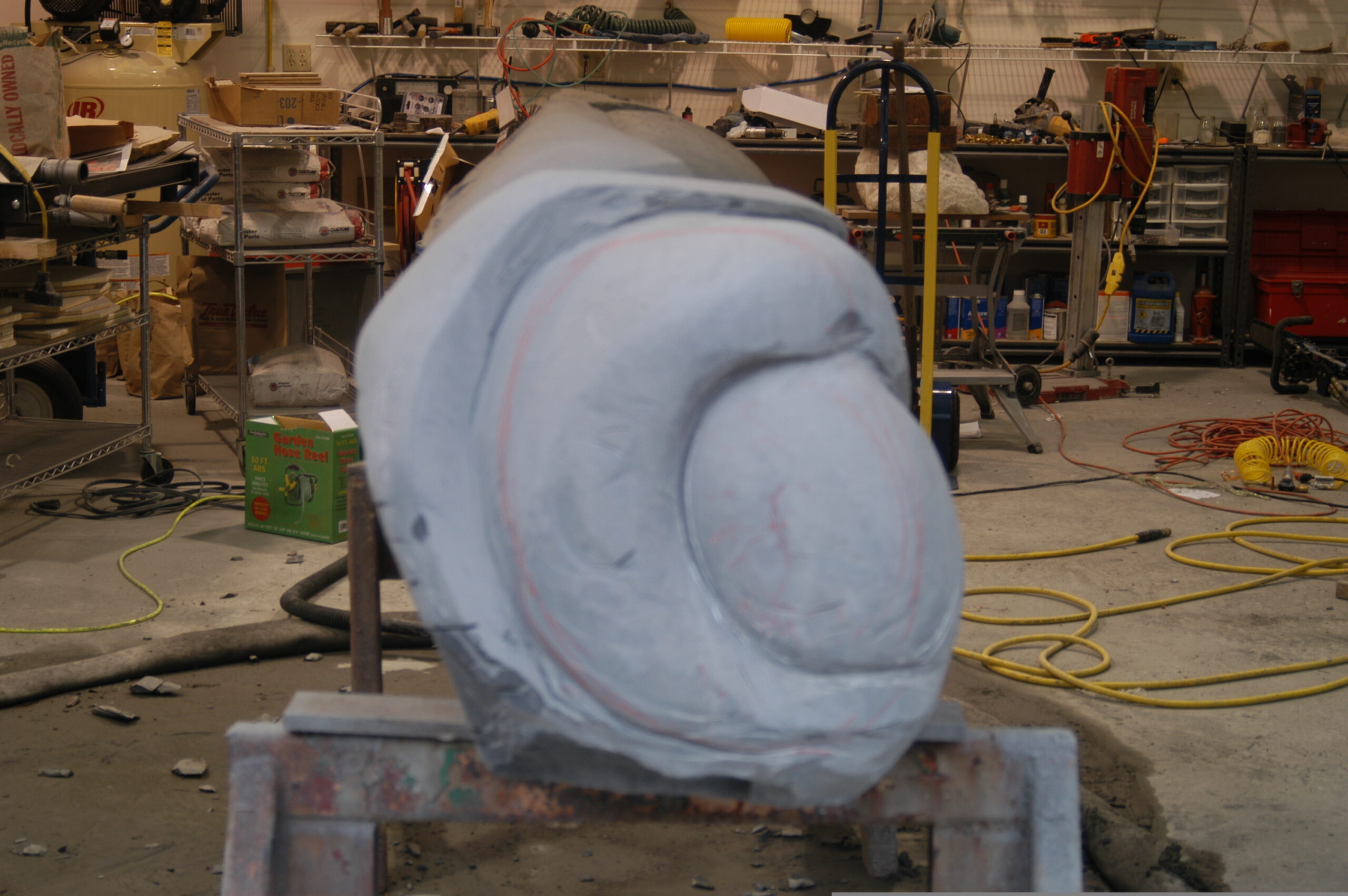
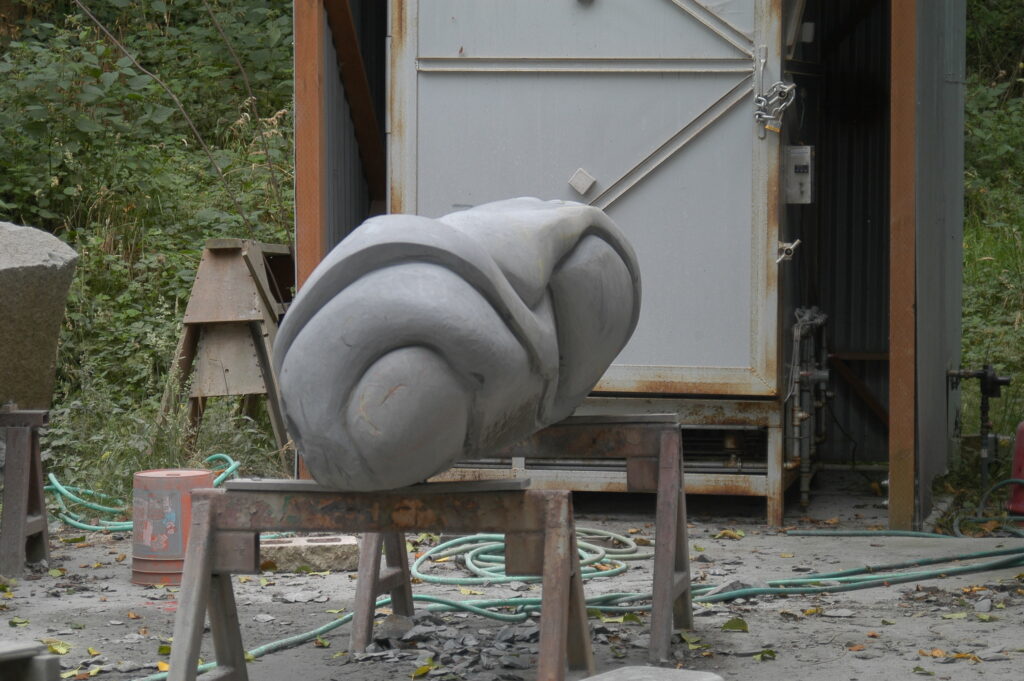
SAWING BASALT…CREATING “SIRENS”
In 1995, rather than carving basalt with chisels and grinders, I began working the hard stone with a diamond chain saw to sculpt longer pieces and experiment with the tool markings. After making several plunge-cuts with the chain saw into the body of a 15′ column…

I split the basalt using the same process developed by the Romans, i.e., I drove wooden shims into the cut crevices and wet them repeatedly until the expanding wood split the stone.
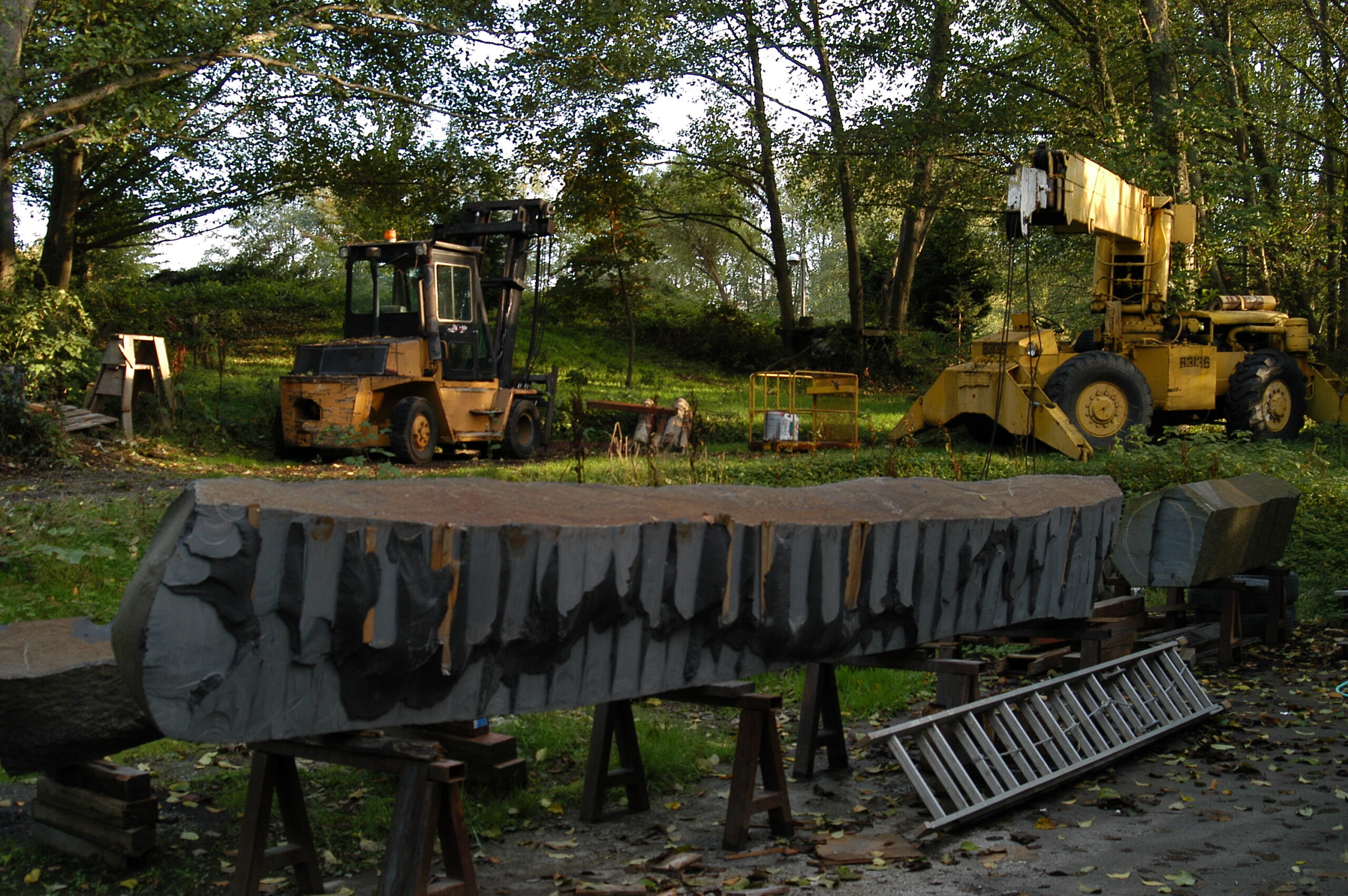
Then I polished the split surfaces.
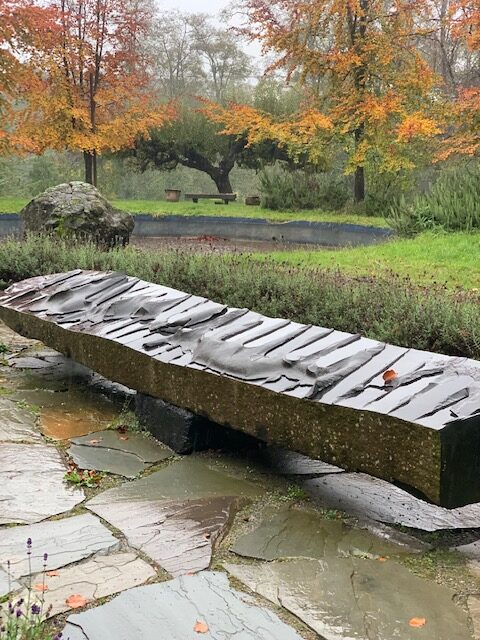
LIGEIA IN THE RAIN
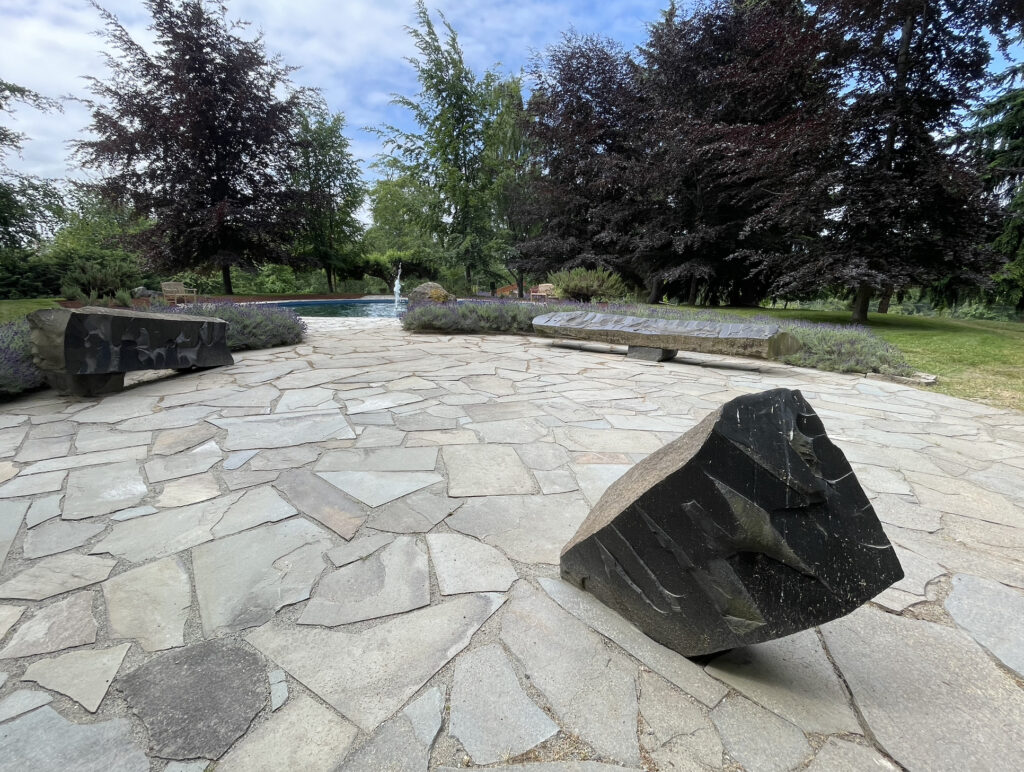
The above triad installation “SIRENS”, completed in 2018, is the second in a series of 3-piece sculptures”
Currently, I am sculpting the third triad, “FURIES”, a non-stone work. I will install it in 2024.
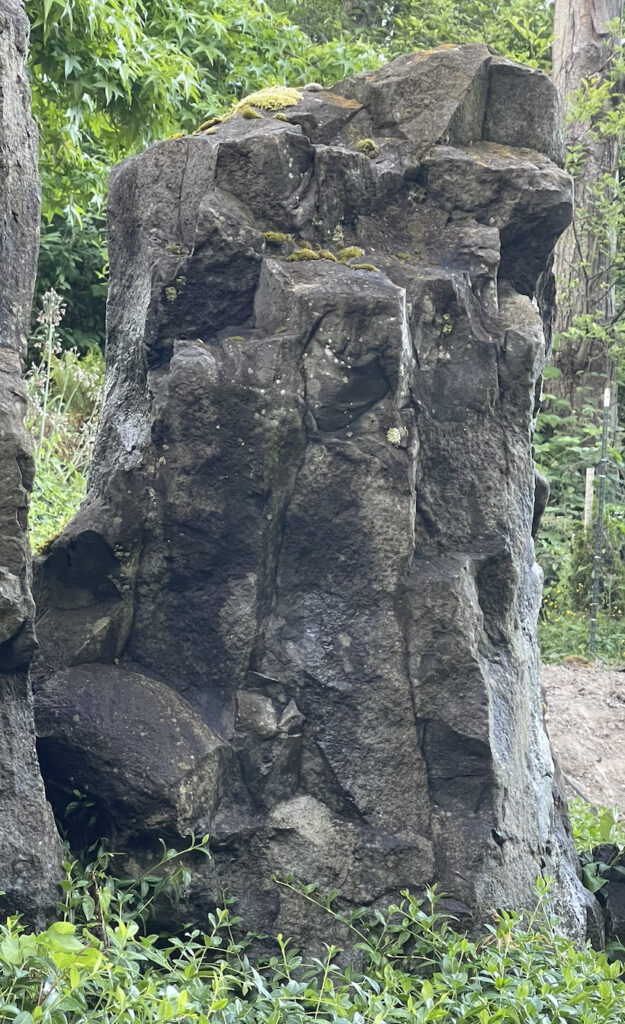
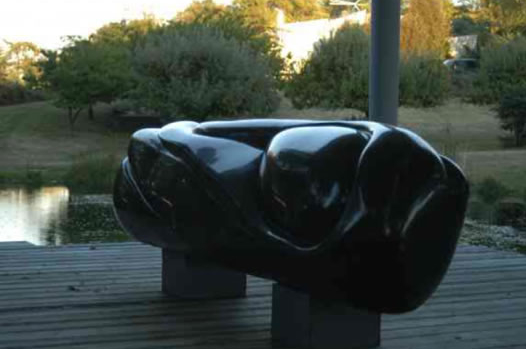
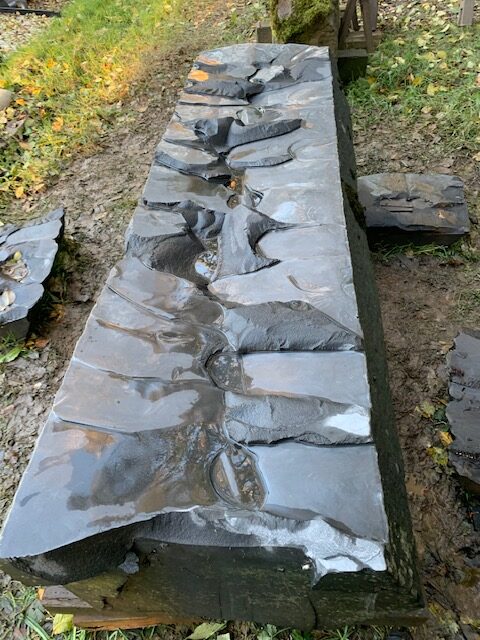
Fascinating process. Impressive result. Do not slow down, you seem to be hitting your stride as you age.
…not enough time for all the shiny things out there, Geoff.
Beautiful and impressive, Gar. And here I am, approaching my 75th birthday, and only now learning about spalted stone, wetted wooden shims, and diamond-tipped chain saws (Can I get one at Ace?)
Dear Gar,
Of course I am impressed by all your work but I am gratefulthat you send it to me for observation. Psyche is of course, proabably one of your fans’ favorites as it looks less like stone than the other two projects.
so good to hear from you. I may write to your mailing address having been stonewalled in getting anything to you otherwise.